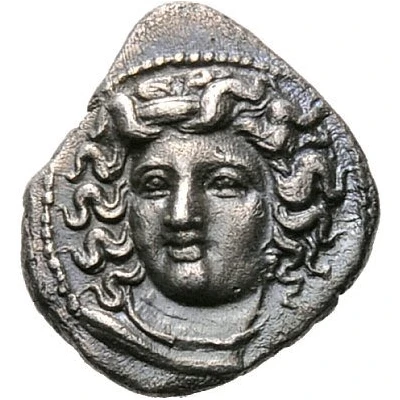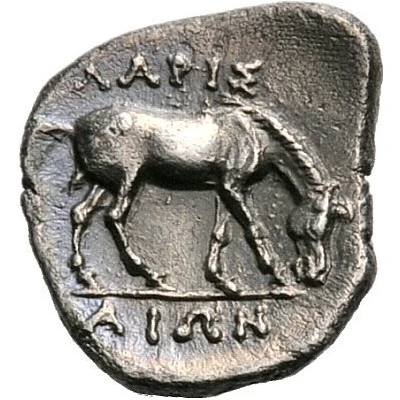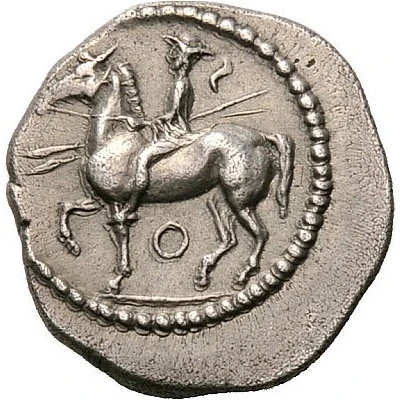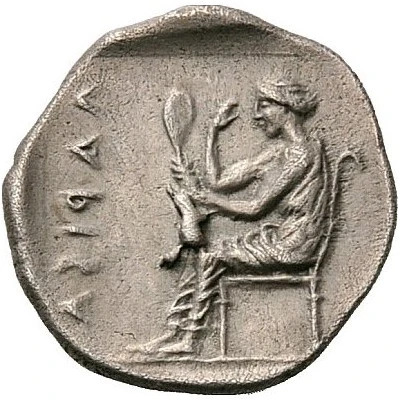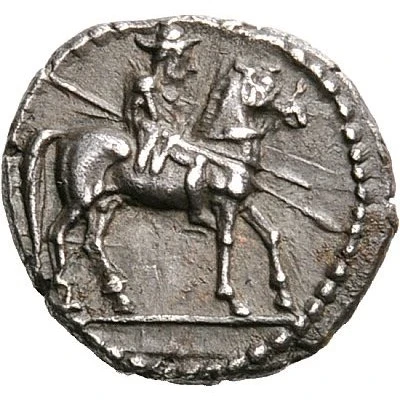
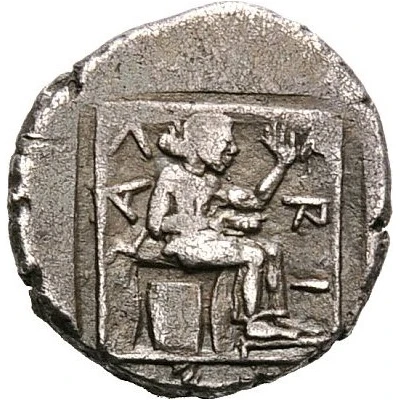

© Nomos AG
Trihemiobol 479 BC - 465 BC
| Silver | 1.42 g | - |
| Issuer | Larissa (Thessaly) |
|---|---|
| Type | Standard circulation coin |
| Years | 479 BC - 465 BC |
| Value | Trihemiobol (¼) |
| Currency | Drachm |
| Composition | Silver |
| Weight | 1.42 g |
| Shape | Round (irregular) |
| Technique | Hammered |
| Demonetized | Yes |
| Updated | 2024-10-10 |
| Numista | N#170965 |
|---|---|
| Rarity index | 100% |
Reverse
The nymph Larissa seated right on backless throne, raising left hand and holding phiale in her right. Below throne, a cista
Script: Greek
Lettering: Λ ΑRΙ Ϟ Α
Comment
Traité IV, 650. pl. CCXCVI, 8 var.
Interesting fact
The Trihemiobol coin from Larissa (Thessaly) was used as a form of currency in ancient Greece during the 5th century BC. Its name "Trihemiobol" comes from the Greek words "tri", meaning three, and "hēmi-", meaning half, referring to the coin's value being equal to half of a drachma, the standard unit of currency at the time. Despite being made of silver, the Trihemiobol was not a valuable coin, with its value being equivalent to only a few days' wages for a skilled worker. However, it was widely used in everyday transactions and played an important role in the economy of ancient Greece.
